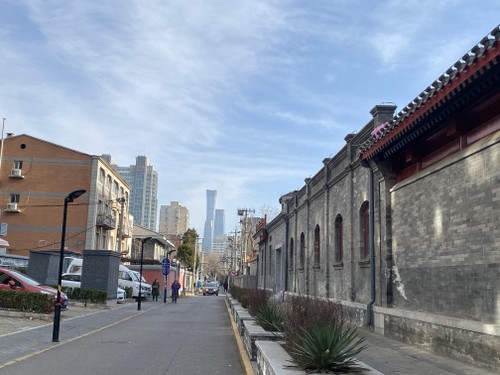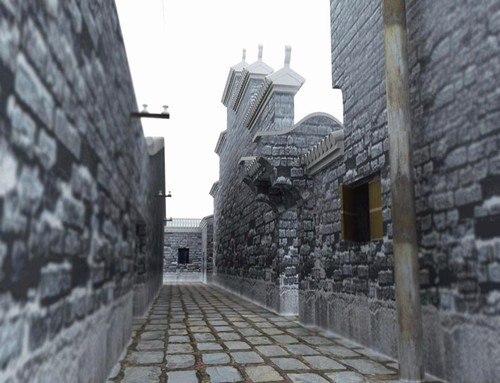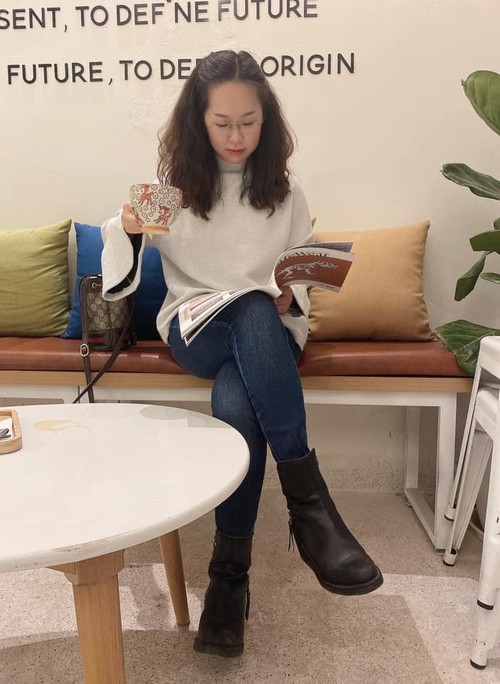 It is BeizongbuHutong where Qing Duo lives. (Photo credit: Qing Duo) It is BeizongbuHutong where Qing Duo lives. (Photo credit: Qing Duo)
|
Bao Tram: Hi, Duo! Welcome to VOV’s Cultural Rendezvous! Help us transport our guests to old Beijing to discover interesting cultural features of China’s capital city.
Qing Duo: Hi, Tram! Thank you for having me here to share with you about Beijing, my home town.
Bao Tram: I know Beijing’s culture embodies both imperial culture and folk culture. As a native Beijinger, which cultural features do you most want foreigners like me to know about?
Qing Duo: Beijing is a city where ancient culture and modern civilization are well integrated. Beijing has its own food, architecture, and customs. When foreigners talk about Beijing, the first thing that comes to mind is Peking Opera, or the Forbidden City, or maybe something else....But if you ask me, as a Beijinger, I would say hutong or siheyuan. A siheyuan is a courtyard surrounded by buildings on all four sides. The Forbidden City is actually the largest siheyuan in the world, and hutong, or traditional alley, is a symbol of civilian life in old Beijing.
Bao Tram: I know that hutong are narrow streets or alleys associated with northern Chinese cities like Beijing. They are important cultural elements of Beijing, is that right?
Qing Duo: The real culture of Beijing lies in the culture of the hutong and siheyuan because they give an insight into the lifestyle of ordinary Beijingers and have a special appeal to tourists. Hutong are is like an encyclopedia of historical evolution and social customs.
Hutong and siheyuan have a history as long as that of Beijing itself, and became an important element of the city since the Yuan Dynasty with the construction and completion of the city under five dynasties. A straight central axis runs through the city north to south. Many horizontal and vertical hutong divide the city into many squares, making Beijing resemble a huge checkerboard. In hutong, there are many square siheyuan, room to room, door to door, and even window to window, integrating architecture and aesthetics with unique charm. Many Beijingers have lived in hutong and siheyuan for generations. Hutong and siheyuan have produced many of Beijing's traditions and customs.
 The largest hutong is about 4 meters wide, but many are only about 40 cm small, just enough to fit one person. (Photo: tourtrungquoc.net.vn) The largest hutong is about 4 meters wide, but many are only about 40 cm small, just enough to fit one person. (Photo: tourtrungquoc.net.vn)
|
Bao Tram: How many hutong are there in Beijing?
Qing Duo: To be honest, I don't know the exact number of hutong in Beijing. There is an old saying: "There are three thousand and six hutong with a name, and there are countless unnamed hutong." That is to say, there are too many hutong to count. In fact, as Beijing develops, the number of hutong is constantly changing. In recent years, with the urban construction of Beijing, many hutong have disappeared, and now there are only about 1,000 hutong left.
Bao Tram: What are the highlights of the hutong?
Qing Duo: Hutong are not only the traffic network of Beijing, but also the place where people live, so it naturally becomes a stage for historical and cultural development. From the outside, maybe you would see every hutong is similar, with narrow roads, gray-brick houses, but if you get to know more about it, you would find that every hutong has its own history and stories. Many celebrities in modern Chinese history also lived in the hutongs, such as Lu Xun, LaoShe, Mei Lanfang… and their former residences are still well preserved. I also live in a hutong. The hutong where I live called BeizongbuHutong. It is located in Dongcheng District, Beijing. Next to my place is the former residence of Lin Huiyin, she is known to be the first female architect in modern China. There are so countless stories hidden in Hutongs, it is an important cultural symbol of Beijing.
Bao Tram: What are the origins of the names of Beijing’s hutong?
Qing Duo: It is interesting to note that a lot of thought has gone into the naming of a hutong as well. While many hutongs are named after people, location or direction, some derive their name from plants, markets or even the shape of the hutong. Some others feature Chinese slang, words and wishes-needless to say, the name of the hutong itself can give us a peek into the Beijing of yore.
This is somewhat similar to the 36 streets in Hanoi. For example, there is a TangFangHutong, Tang Fang means sugar house. From the name you would know this hutong was specialized in making sugar.
Bao Tram: Have these hutong preserved the crafts they are named after?
 Qing Duo, a former correspondent for China Radio International (Photo credit: Qing Duo) Qing Duo, a former correspondent for China Radio International (Photo credit: Qing Duo) |
Qing Duo: I’m afraid no. You know, Beijing changes a lot these years. Many hutongs have been renovated to make them wider and better, also many hutongs have disappeared. Some of the existing hutongs are still where the people live, while others have become famous tourist attractions, such as Nanluoguxiang and Wudaoying. They have become a gathering place for many trendy shops. I posted a video about WudaoyingHutong on Facebook. You can see it is now a place that combines tradition and modernity.
Bao Tram: Which words best describes what you like most about hutong?
Qing Duo: I would say “unique”, maybe. Beijingers have a special bond with the hutong, which have influenced their lifestyle and their way of thinking. Although Beijing is developing rapidly with more and more high-rise buildings, many hutong have been designated as protected in an attempt to preserve this aspect of Chinese cultural history. They have a new look in the new era.
Bao Tram: Thank you so much, Duo, for joining us today and telling us about hutong, a cultural feature of Beijing since ancient times.
Qing Duo: I really enjoyed talking with you. Thank you.